
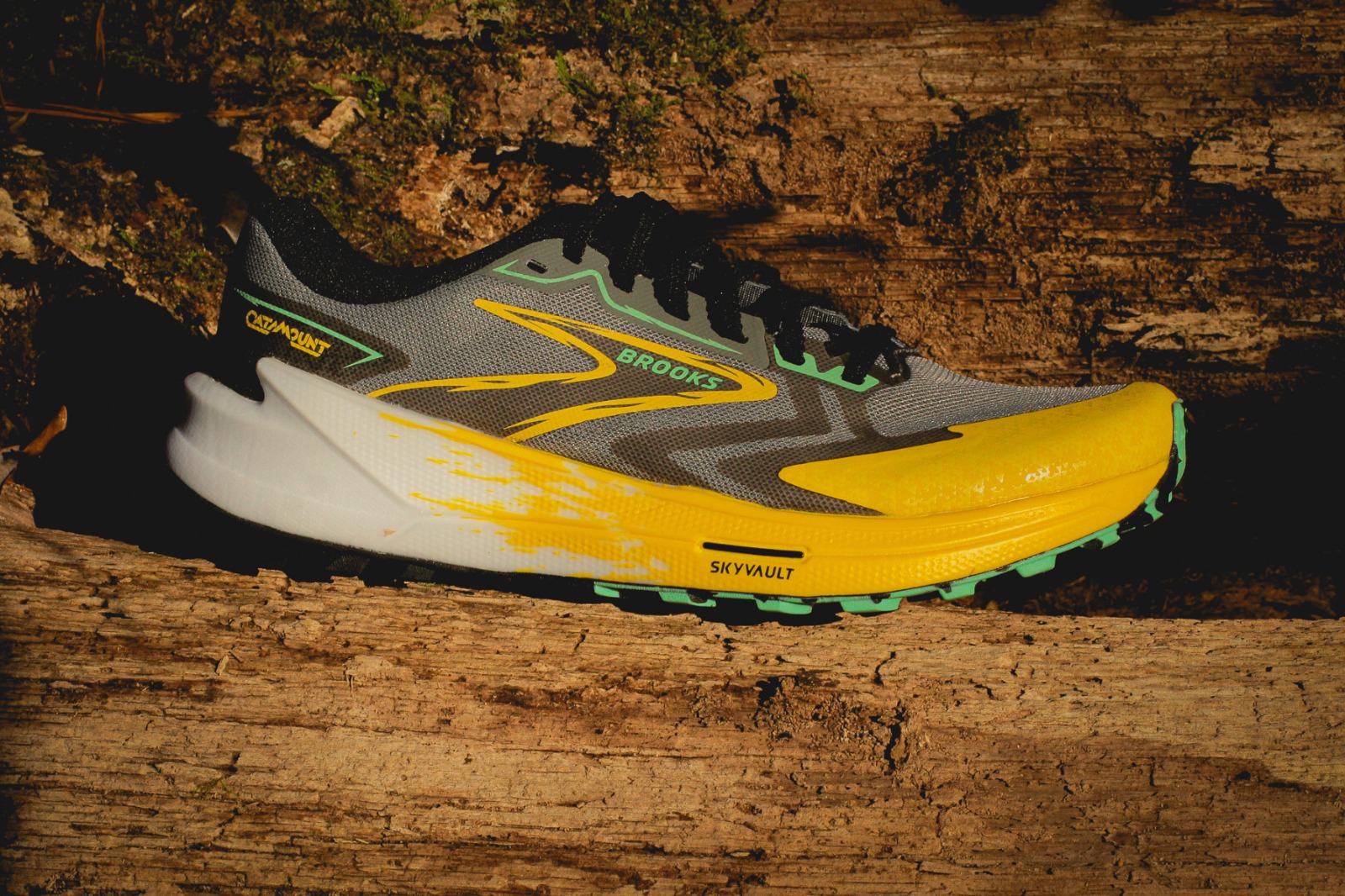
We independently review everything we recommend. When you buy through our links, we may earn a commission.
9.4 oz (266 g) for a US M9,
8.4 oz (238 g) for a US W7
22 mm in heel, 16 mm in forefoot (4 mm drop), midsole only
Do-it-all trail running, race day on any surface
DNA Flash nitrogen-infused midsole with a single layer engineered mesh upper, TrailTrack Green rubber outsole

Designed for lightweight speed and agility on trails
TAYLOR: On so many levels, the running industry is electric right now. We are experiencing both broadening and specificity at the same time. Modern day running shoes are getting more niche as we speak. Trail shoes are maybe even leading the way in that regard. Need something for a long mountainous ultra? That’s available. Shooting for a VK? Here are some options. Name your distance, pace, and terrain. There’s bound to be something.
Perhaps the most experience these days is to weed through all of the options in search for a singular shoe that can do it all well, i.e. the one-arrow quiver. I’m not saying our quest for the golden mushroom is over, but by the end of this review you’ll see that we all agree: the upcoming Brooks Catamount 3 is about as versatile of an option as we could recommend right now.
The story of the Catamount line is always a fun one. When the v1 came out, it seemed like a page was taken out of the road running book. In my memory, it’s the first trail shoe to have a nitrogen-infused foam. It’s also the first trail shoe that I knew to have a blindingly white upper; it caused a bit of an uproar, but I loved it, and will forever think of it as a canvas. The shoe was rad for the time but had some notable changes that needed to be made, most notably in the fit of the upper.
Last year, the Brooks Catamount 2 was released. It surprised me in that it was overhauled, yet remained true to its first design. This time around the Catamount was a much more proficient trail running shoe, adding elements like a retooled nitro-infused DNA Flash midsole, Skyvault plate, and a better fitting upper.
The Brooks Catamount 3 takes all of the previous iterations’ learnings and takes it just a step further. The upper is now a single layer woven engineered mesh for a lighter more wrapped fit. It will retain the DNA Flash midsole, Skyvault plate, and a new formula of TrailTack Green rubber outsole.
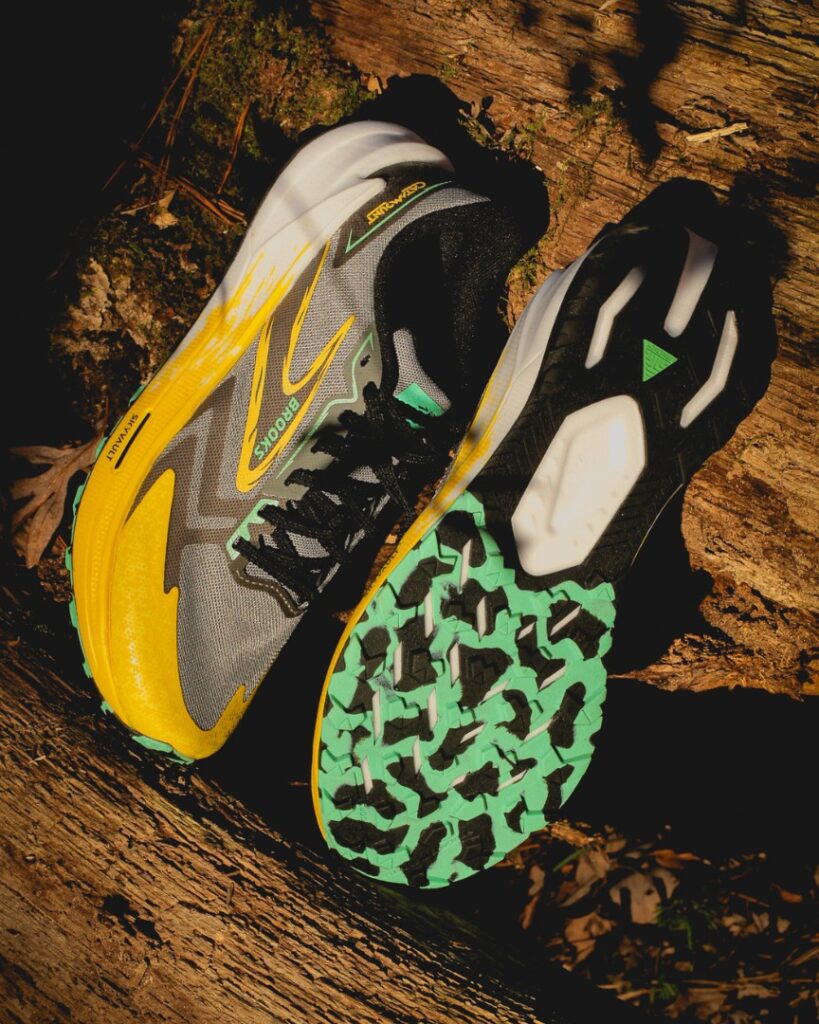
TrailTack Green outsole
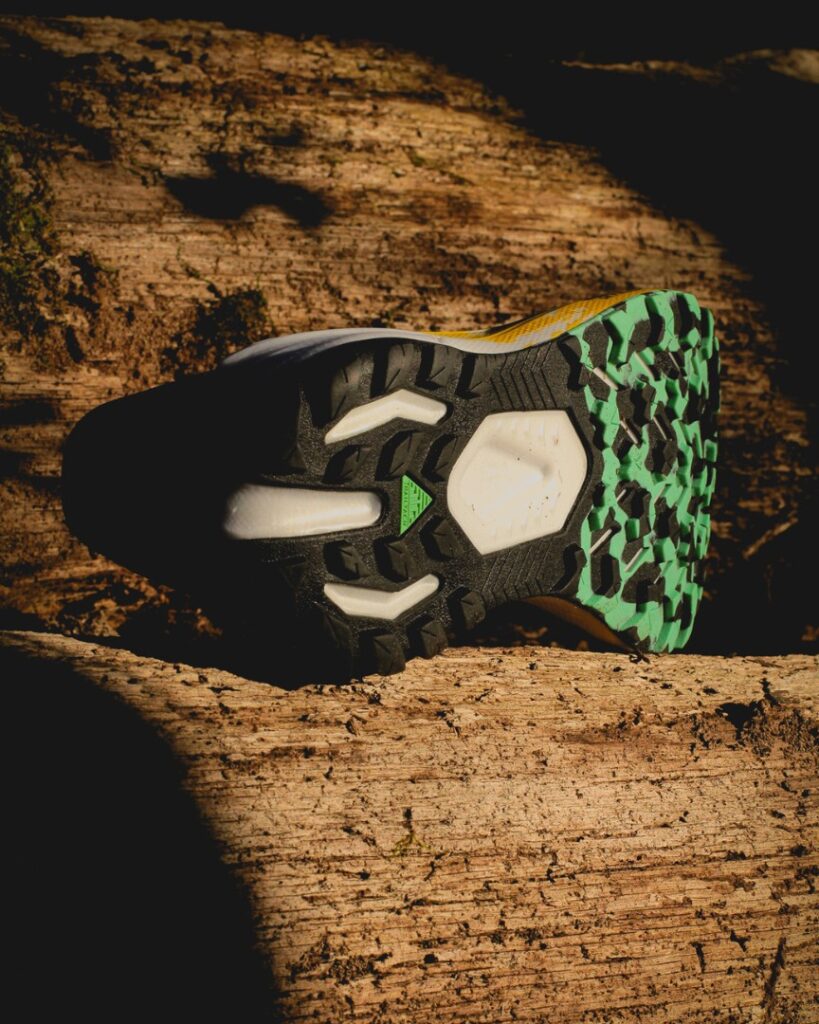
ROBBE: On account of some wacky Mid-Atlantic weather here in Maryland over the past two weeks, I’ll be taking on this review from a different point of view. Basically, I couldn’t get out on trails because they were all covered in snow and I ain’t trying to break my ankles on a hidden rock or rabbit hole. So instead of wooded trails, I ran city trails. Translation: snowy and icy sidewalks and streets. Since it’s a road to trail shoe, I’m going to say that will suffice. Feel free to judge otherwise.
ALEX: The Brooks Catamount 3 is coming in hot with new flashy colorways, and a number of improvements designed to support your need for speed. This one is intended for trail races between 50 and 100K. I am excited that there are shoes designed intentionally enough to support everything from fast, shorter trail races, to long technical training runs, to mixed surface training, and everything in between.
I used to think that running in the same shoe every day was the ticket to staying healthy and injury free. Many injuries later, I find myself switching in and out of a number of shoes that I have learned work for me and my feet are quite happy. Running happy. Run happy. Brooks. Wow, they got me to say it without even asking. #notanad
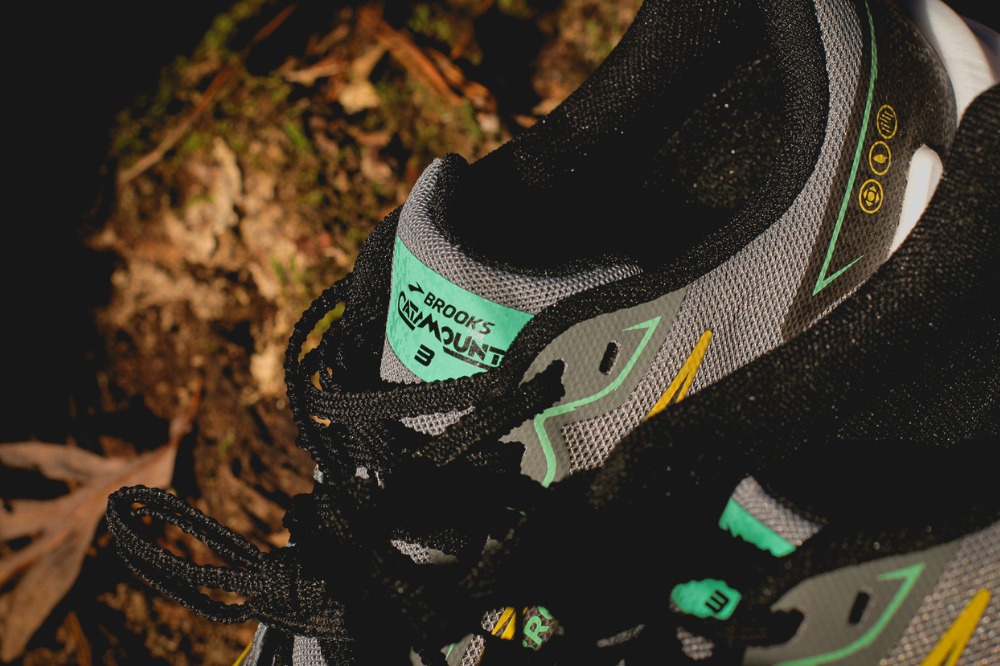
MICHAEL: Do you ever have a piece of gear marketed to you on Instagram and think “Wow, I think I might actually really enjoy that product?” If you frequent BITR’s The Drop podcast, you know this happens to some more than others. Well, a couple years back, I saw the first version of the Catamount release and had that exact thought. And of course, after clicking on the shoe and checking it out on Brooks’ website, approximately one million ads have since beckoned me to give both versions 1 and 2 a try. Somehow, I refrained, and here I am finally giving the Catamount series a go in version 3. The best part: It just might be everything I hoped for.
TAYLOR: Versatility is absolutely the quality I’ll come back to time and time again for the Brooks Catamount 3. Breaking it apart a bit more will give a window into the how and why.
First, the underfoot combo strikes middle ground in a lot of respects and does so with high-quality ingredients. As mentioned, this midsole is made of a nitrogen-infused DNA Flash. It’s the same stuff that was found in the Catamount 2, and premium road shoes like the Hyperion (formerly Tempo), Hyperion Max, and Hyperion Elite 4. What you can expect is a true sense of responsiveness that’s resilient enough to hang on the trails. Not all nitro infused midsoles can actually claim that. Being that the midsole is medium density and moderately stacked at 22/15 mm (overall stack is 30/24 mm), the ride is also fairly protective. I really like that there’s some ground feel, some protection, and just a lot of fun. It’s a truly versatile setup.
The Skyvault plate has some say in the overall feel too. Just like in the previous version, I found the plate to primarily assist as an adaptable stabilizer and like a rock plate. There’s not a lot of “pop” coming from the plate itself. Brooks does claim that the Skyvault plate also assists with uphill efficiency. I’d agree with that. It helps the midsole not flex or twist too much and provide a subtle snap back into place when toeing off.
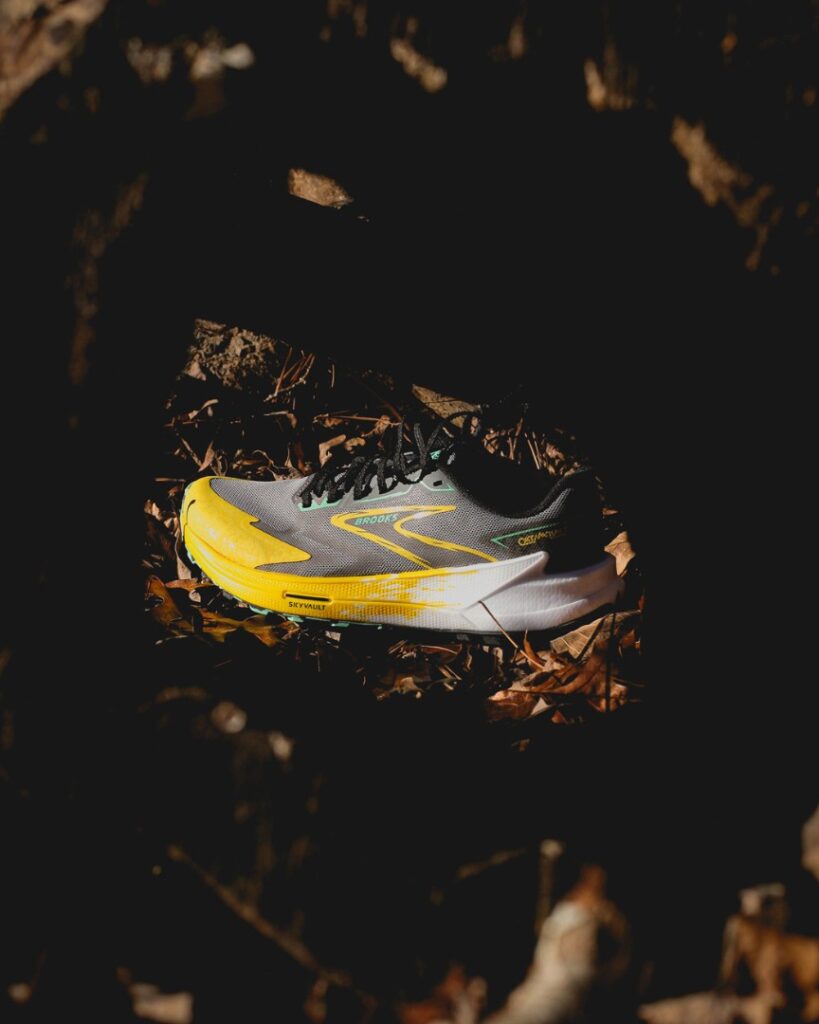
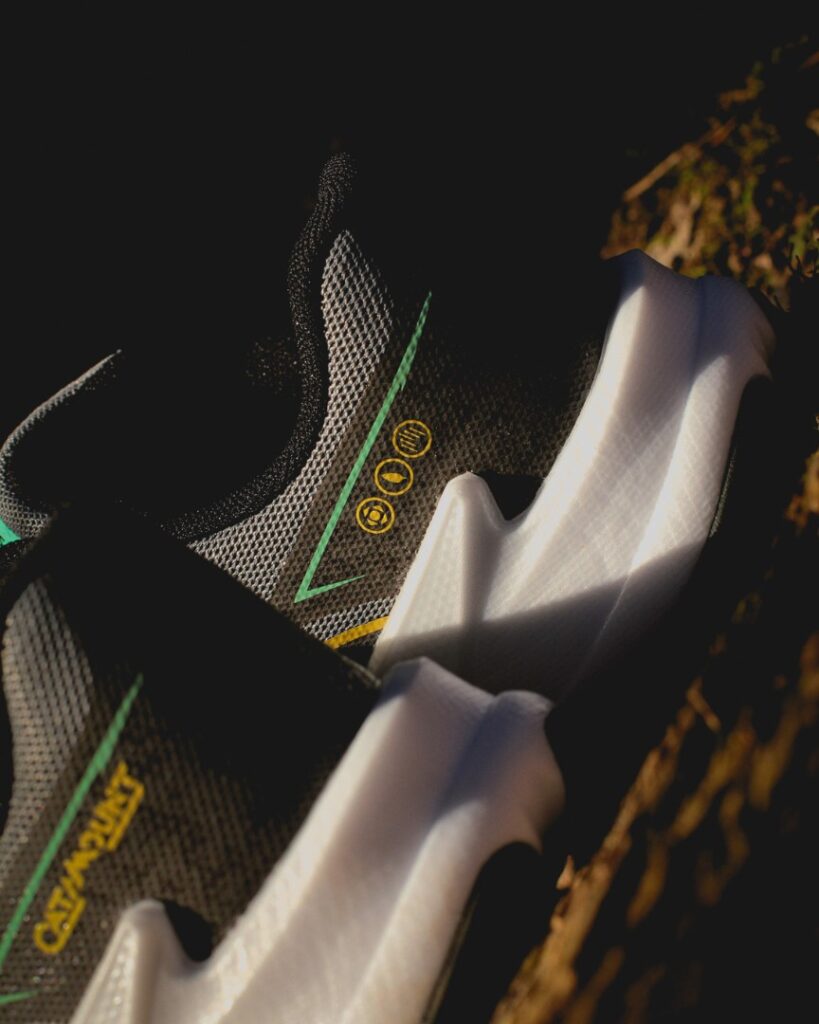
Uppers are an arena where Brooks never loses. This new single layer woven engineered mesh is comfortable, durable, and secure in all of the right places. There are enough overlays to keep the lighter-feeling mesh structured through the midfoot and forefoot. A very nice gusseted/ moderately padded tongue does its job at hugging the foot appropriately. The heel is also structured and padded enough to anchor the foot. All of these specifications lead only to confidence on all terrain. Brooks is giving us a masterclass with the overall fit in the Catamount 3.
Another update to this shoe is Brooks’ new formula of TrailTack Green. It’s a very similar tacky and durable formula as in previous models but it is much more sustainably made. If Vibram Megagrip or Inov-8’s Graphene Grip is our A standard, then TrailTack Green rubber would come in at a strong B+. The 3.5 mm multidirectional/sized chevron lugs lend themselves to being ready for most any terrain. When sustainability and performance cross paths, I’m always jumping on the wagon.
In case you didn’t get it the first umpteenth times, the Brooks Catamount 3 is very well-rounded experience. It felt just as good on gravel roads as it did raging down the mountainside.
Other shoes to compare are the Brooks Hyperion Max, Salomon Genesis, Salomon Pulsar Trail Pro 2, Merrell Long Sky 2, Saucony Peregrine 13, and even the Hoka Tecton X 2. As you can tell, these shoes offer a wide range between a smooth transition/quick trail shoe to a highly precise technical shoes.
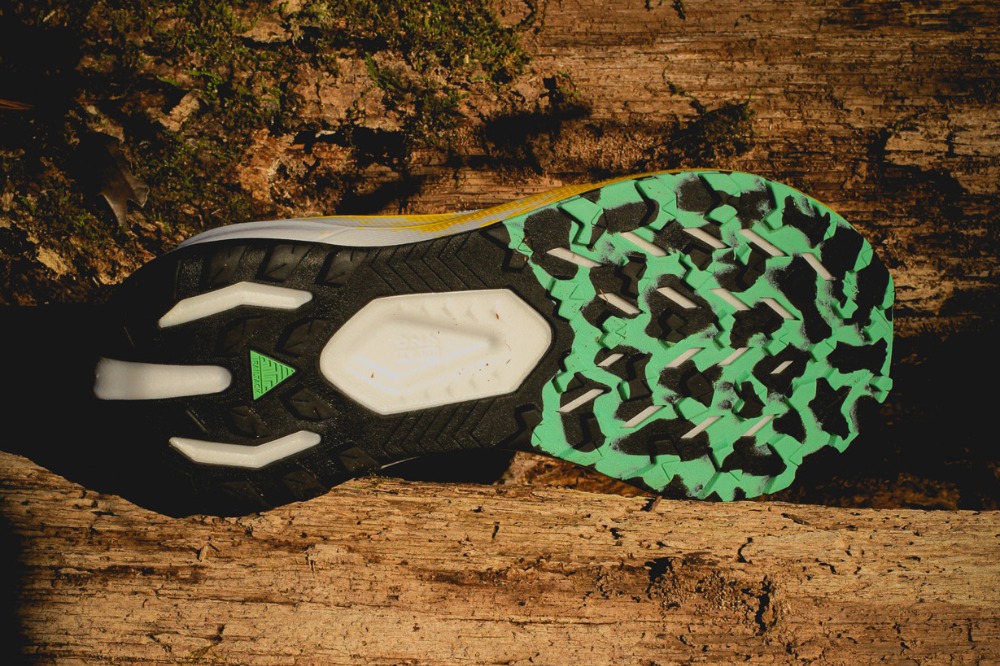
TrailTack Green outsole rubber is sticky and grippy
ROBBE: Brooks has really upped their game in the design department for 2024, in both road and trail. The Catamount 3 is no exception. With a Speedland-ish splatter on the midsole (purely a coincidence), a jagged midsole design towards the rear of the shoe, and a simple upper with strategic overlays, it’s a slightly aggressive-yet-clean look that works well.
No complaints with the fit of the upper, it has a nice lockdown around the foot with zero slippage. Some may even find it a bit too snug, though I thought it was perfect. The toe bumper is a nice touch as well.
The weight is fantastic for this shoe. At 8.4 ounces, it’s well in line with a handful of road racing shoes, making this one of the lightest trail shoes out there. As such, it’s nimble and fast, especially with the extra force of the SkyVault trail plate. Again, I took this on city roads and snowy terrain and it felt equally at home on each. Since there was a mixture of snow and slush all around Baltimore, I wore it for a 14-mile long run this past weekend and found it to perform just as good as a solid daily trainer.
Lastly, the Trail Track outsole gave me a pretty good grip even in terrible conditions, though I think it could be a little bit tackier. It is made from 25% recycled content, which I think limits the performance and stickiness, though I can’t independently confirm that theory.
ALEX: The shoe’s precise fit, firm midsole, and grip immediately reminded me of my Salomon S/Lab Sense Ultra days. The Brooks’ proprietary DNA Flash midsole feels firm and responsive. It maintains just enough cushioning to feel energetic without sacrificing speed. Definitely more on the firm end, however.
The TrailTrack Green rubber outsole is sticky and grippy across wet, muddy, rocky, technical terrain. Paired with the Sky Vault plate underfoot, the Catamount 3 feels highly protective from surprise roots and rocks underfoot, and the entire midsole/outsole combination felt stable and well balanced. As far as the improved uphill propulsion and efficiency that Taylor speaks of, I would give that a definite maybe based on my uphill “speed.” There is only so much even a very well designed shoe can do for a person…
I really appreciated the 6 mm drop. I recently moved from Minnesota to Utah where everything is steep. My Achilles has been working overtime and anything above a 4 mm drop feels quite nice lately.
Running true to size, the upper wrapped snug and secure around my foot. The lightly padded tongue and heel collar are well designed, i.e. you don’t think twice about them.
A good running shoe under $200 is (unfortunately) becoming harder and harder to come by. Especially a plated racing shoe. I am a big fan of the $170 price tag on this one, especially given the quality and durability that we can trust from Brooks.

DNA Flash midsole is bouncy yet responsive
MICHAEL: Pretty much everything great about the Catamount 3 has already been highlighted, so I’ll just mention some of my favorite aspects. For starters, this is one of the best rock plates (excuse me… Skyvault plates) I’ve ever experienced in a shoe. The buzzword here is tuned. Some other shoes that tip the scales this light will start to feel a little squirmy through the midfoot and heel when thrown into steep, technical descents, but not the Catamount. The stiffness and support offered by the plate really keep the DNA flash midsole feeling smooth and responsive, not to mention offering extra protection when things get a little on the wild side.
Next up, this shoe fits incredibly well. Of course, this is somewhat of a subjective issue to harp on, but I really felt totally locked down and secure in every area in the Catamount. This is where I’ll come back to the same word Taylor used – versatility. Despite its paired down, race-day vibe, this secure fit really allows the Catamount to punch above its weight when it comes to security and confidence on ultra-technical terrain.
Other highlights for me include the solid performance of the TrailTack green outsole, substantial toe bumper, and the nearly-perfect durometer of the DNA Flash midsole. I tend to prefer midsoles that err a little on the firm side for this sort of uptempo shoe. It’s not explosive by any means, but I did get a welcome, subtle bounce from the midsole opening up the pace on stretches of fire road.
Shop Brooks Catamount 3 - Men Shop Brooks Catamount 3 - WomenTAYLOR: Put the Brooks Catamount 3 under the microscope. That’s the only way to find some faults.
Some will say that a “versatile” trail shoe would need at least 5 millimeter lugs. I do think adding some luggage would be helpful in some conditions. I know the 3.5 mm lug will be a dealbreaker for some, and that’s mostly why I bring it up here.
Maybe it’s the hundreds of trail shoes that I’ve reviewed creeping up on me, but I’ve noticed some weird shaped toe boxes lately. For my foot, the Brooks Catamount 3’s toe box tapered out farther into the toe box than an average shoe. I had this same issue in the original Hoka Tecton X, Saucony Peregrine 13 and Saucony Endorphin Rift. There is a longer lacing chain and some overlays over the midfoot-to-toe box transition giving a narrow sensation, but it’s really not that narrow. Maybe that’s where the issue is but this shouldn’t be a dealbreaker. It is simply something I noticed and could get on with after I acknowledged it.
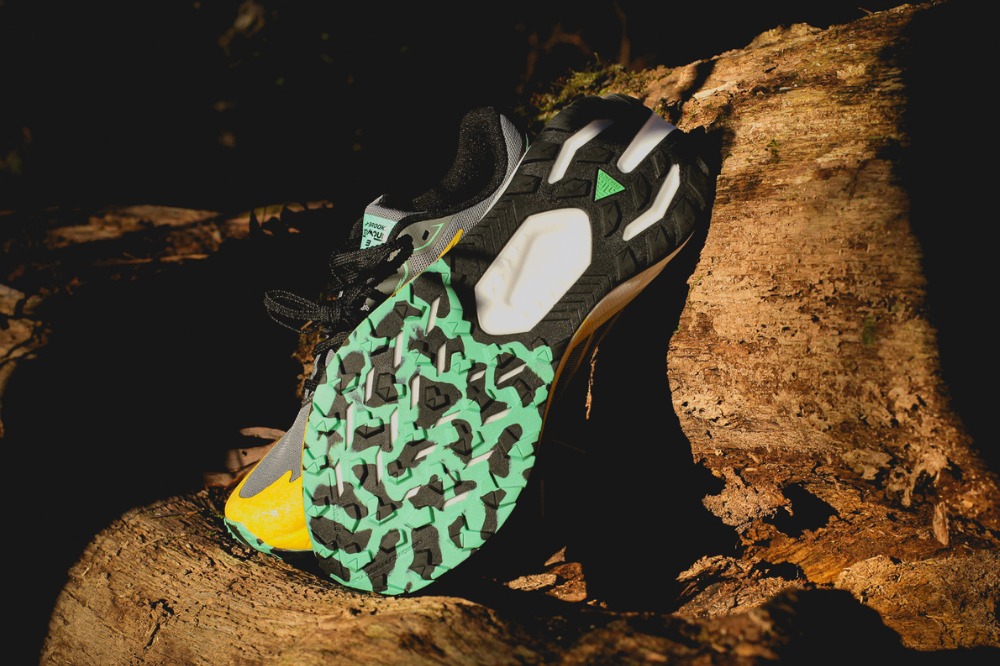
Upper is protective and drains well
ROBBE: This is a very specific situation, but in cold temperatures (under 20F), the midsole hardens up quite a bit. I suspect this is from the extra air in a supercritical midsole that normally make it bouncy; when the temperatures drop it becomes more dense overall. So in much of my experience, I didn’t get that promising bounce from the DNA Flash.
While I do like a good low-to-the-ground running shoe, I think this one could use just a slight addition to the stack height for a bit more comfort.
ALEX: The overall fit of the shoe feels relatively narrow, especially in the midfoot with the medial side of the shoe pushing up against my arch. I didn’t experience discomfort or any other issues up to this point, although it’s something to consider if you have a wider midfoot or simply prefer a little more space throughout.
The shoe was designed for racing up to 100K. It takes me a while to run 100K, and while I appreciate all of the design elements that make the Catamount 3 fast and responsive, I would probably choose a slightly more plush and forgiving ride for that distance.
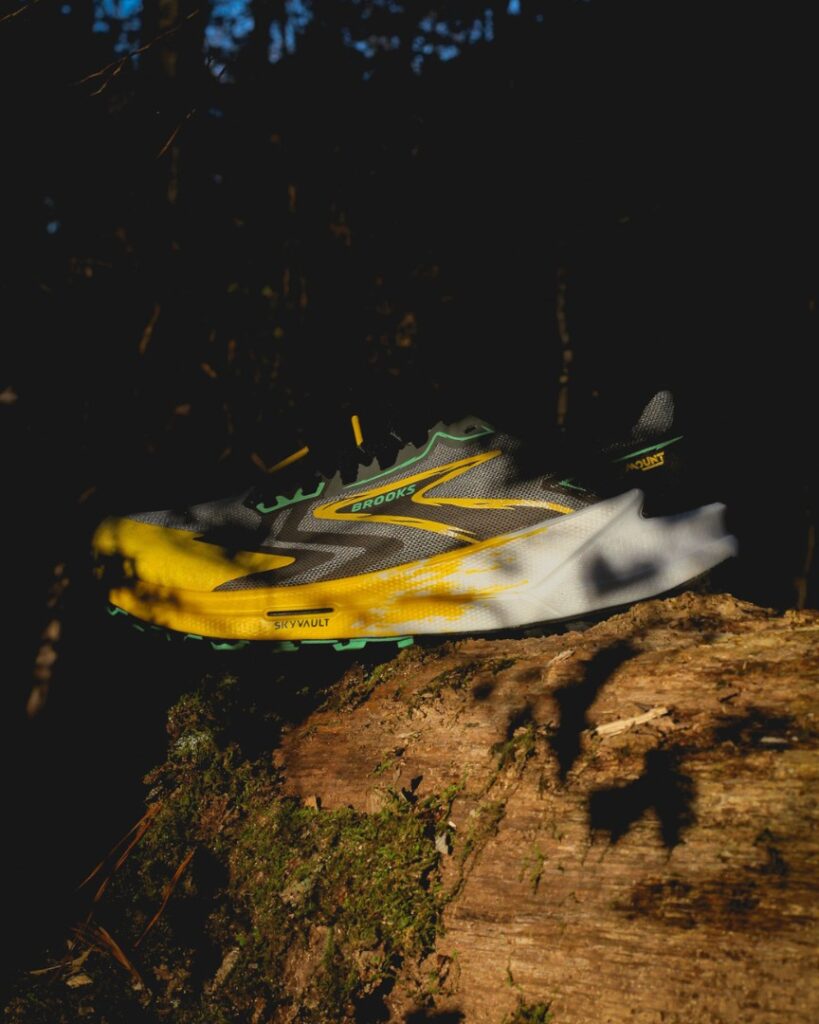
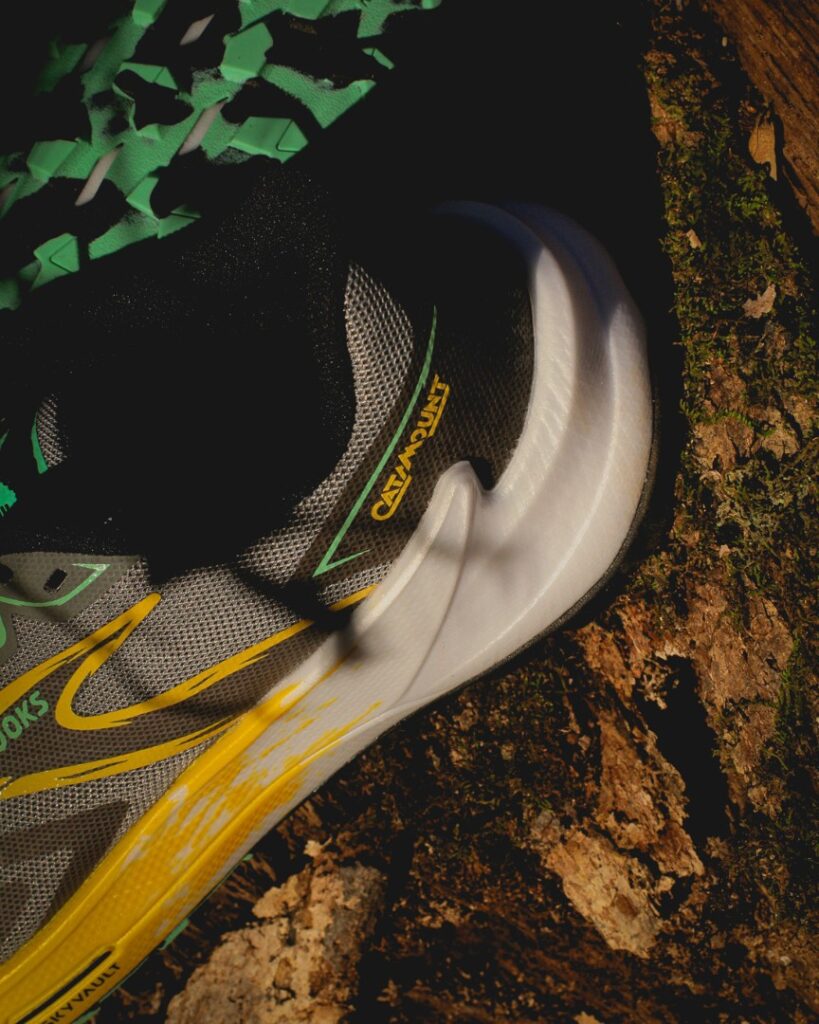
MICHAEL: I really have nothing substantial to complain about here, probably since the fit was honestly perfect for my foot shape. But like Taylor said, I just can’t see racing a 100k in these. They are a versatile shoe, no doubt. Perhaps a “swiss-army knife” if you will, but an extra 3-5 mm of stack height is the one extra blade missing on this multitool that would make it perfect for whittling down those proverbial 100k-sized twigs. That being said, I think the Catamount 3 has basically everything to carry along for adventures 5 hours and under.
Also, I found the toe bumper to be really stiff and a bit caustic at times. Typically, I don’t mind if my toes make contact with the end of the shoe on descents, especially if the smaller size of the shoe makes for a more secure fit, but the bumper on the Catamount is so substantial sometimes it feels a little too firm and irritating. I don’t know, maybe I just need to clip my toenails or try a slightly thicker sock.
Shop Brooks Catamount 3 - Men Shop Brooks Catamount 3 - WomenTAYLOR: The Brooks Catamount has serious range. Put it in any position on the court, and it’ll put up some major points. I enjoyed this shoe most as a fast and fun trail runner. The overall fit and ride gave me the confidence to do just about anything. Brooks markets the shoe as a potential 50K-100K racer. It is a moderately stacked shoe that some could take that distance, but I’d bet most would use this for anything from a 5K-50K race day shoe or pick up for a zippy and versatile daily trainer.
ROBBE: If you’re looking for a shoe to get locked into as you take on some serious trail efforts, then you’ll love the Brooks Catamount 3. It’s fast and fun and built for any terrain.

ALEX: I am always on the lookout for shoes that deliver on durability, comfort, and traction. The Brooks Catamount 3 has surpassed my expectations, delivering a fun and fast trail-running experience. It’s the effortless blend of speed, protection, comfort, and the durability you can rely on from Brooks.
MICHAEL: After just one run in the Catamount, I was in love. Truly an exquisite blend of cushioning, protection, traction, and weight, this shoe runs silky smooth on almost any terrain when things start to quicken up. I would recommend this shoe for just about any runner looking to pick up the pace on everything from daily mileage and workouts to race day.
You can pick up the Brooks Catamount 3 for $170 at Running Warehouse (featuring free 2-day shipping and 90-day returns) using the buttons below.
Have something to say? Leave a Comment

Taylor Bodin is a trail and ultra runner living in Estes Park, Colo., with his wife and daughters. As the head of the Dirt Division at Believe in the Run, trail running is pretty much the only hobby he can manage right now and loves it. Every so often, he will pop off a race or FKT attempt because competition is pure and the original motivator for him getting into running anyway.
More from Taylor
Robbe is the senior editor of Believe in the Run. He loves going on weird routes through Baltimore, finding trash on the ground, and running with the Faster Bastards. At home in the city, but country at heart. Loves his two boys more than anything. Has the weakest ankles in the game.
More from Robbe
Alex is a trail and ultra runner from the upper midwest who loves Minnesota’s long winters and logging miles on the rooty, rocky, steep trails of Lake Superior’s North Shore. She was the first female to set a supported FKT on the 310 mile Superior Hiking Trail (SHT) and enjoys multi-day events and races, especially if they involve snow and -20 degree temps.
All-time favorite shoes: Hoka Speedgoat Evo, Hoka Tecton X, Altra Timp.
More from Alex
An engineer living with his wife and cat in Birmingham, Ala., Michael loves chill morning runs in the neighborhood, but especially enjoys soaking up long miles of technical southeast singletrack. Occasionally, he’ll get a racing itch and actually string together some “organized” training for a trail race or FKT. In his free time, Michael enjoys books, backpacking, and hanging out with friends.
More from Michael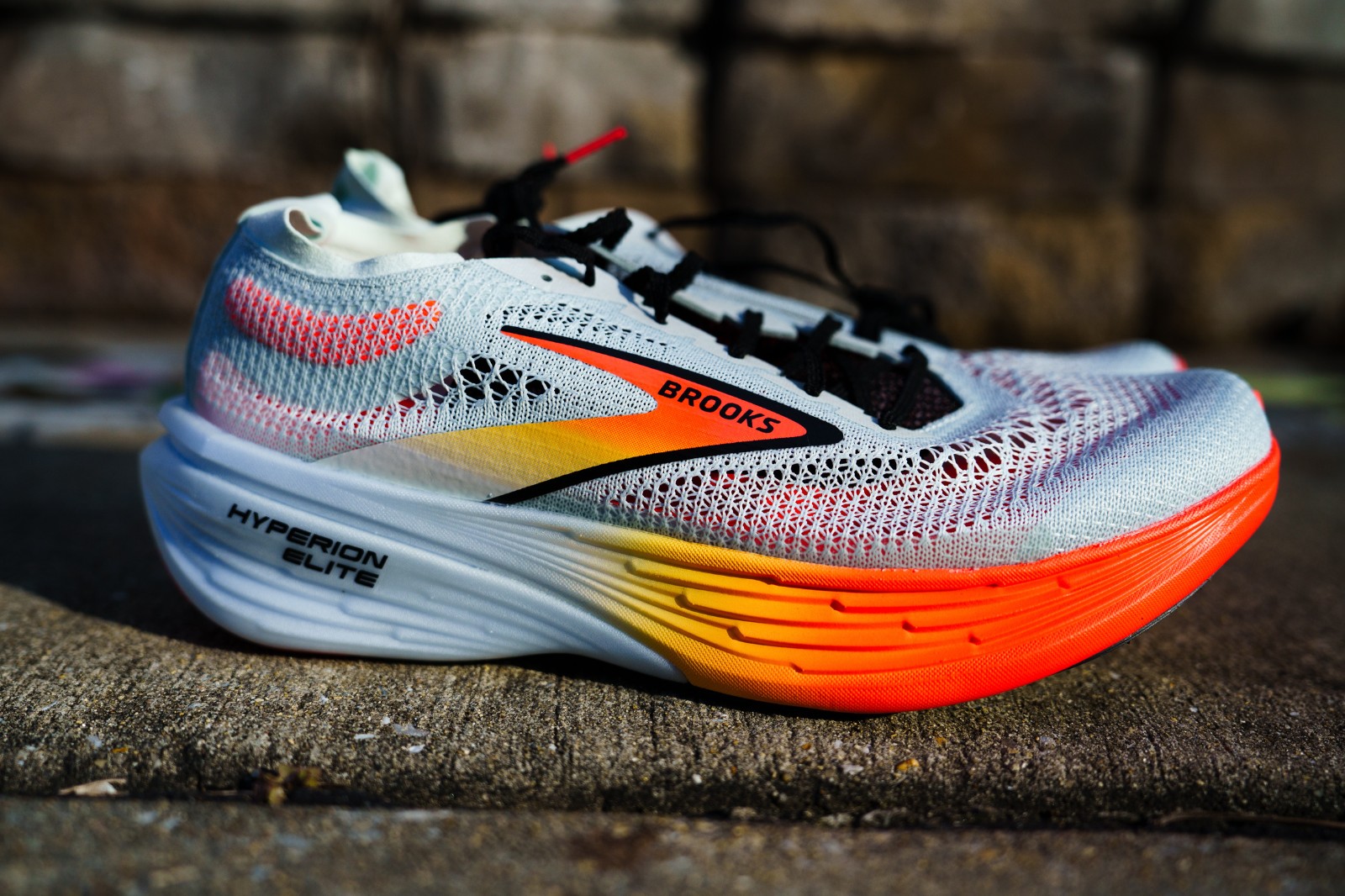
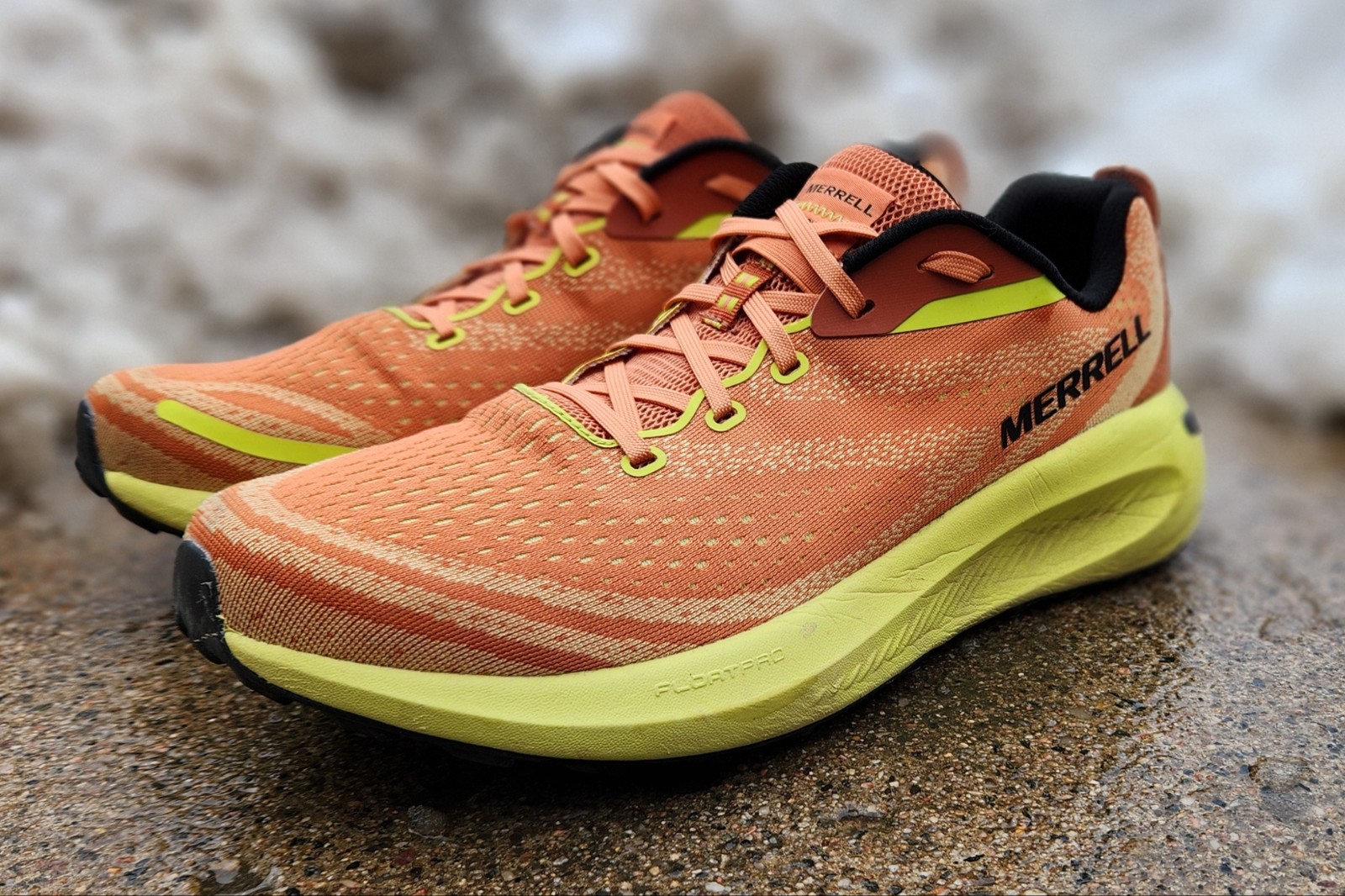
Is the midsole even a bit softer than the 2? That shoe is a near perfect trail shoe, except for the plank-like midsole. Thanks!
Referring to the Salomon brand here is, imho, high praise for this Brooks shoe. I’ve used the Catamount v1 & v2 on multiple 50-mile runs, twice through serious wilderness in western Montana with a fair amount of vert. This shoe surprised me the first time, and its continued performance is why I keep coming back.
The word “performance” is not one I typically use for Brooks shoes. The simple fact is, with maybe two exceptions, Brooks doesn’t make shoes for people who seek performance. They might be on the feet of tons of people at marathon starting lines, but they sure don’t finish first.
Having said that, I have found the Catamount to perform very well. I raced one 50-miler in it at 9:40/mile pace, and my feet didn’t hurt at all, and I found that nitrogen midsole to be more than adequately bouncy. My legs were tired but it wasn’t because of the shoes. The Catamount is firm, but it’s also cushy enough that it just felt right.
It’s a versatile blend of cush & propulsion with just enough stability to work for pretty much any runner.
Please don’t knock it for being low-volume. It’s not really “narrow,” imho, it’s more like “low volume.” And given that only a tiny minority of shoes are low volume, can we just please have this one? Okay, I’m glad we had this little talk.
I am definitely going to buy this version and I highly recommend it.